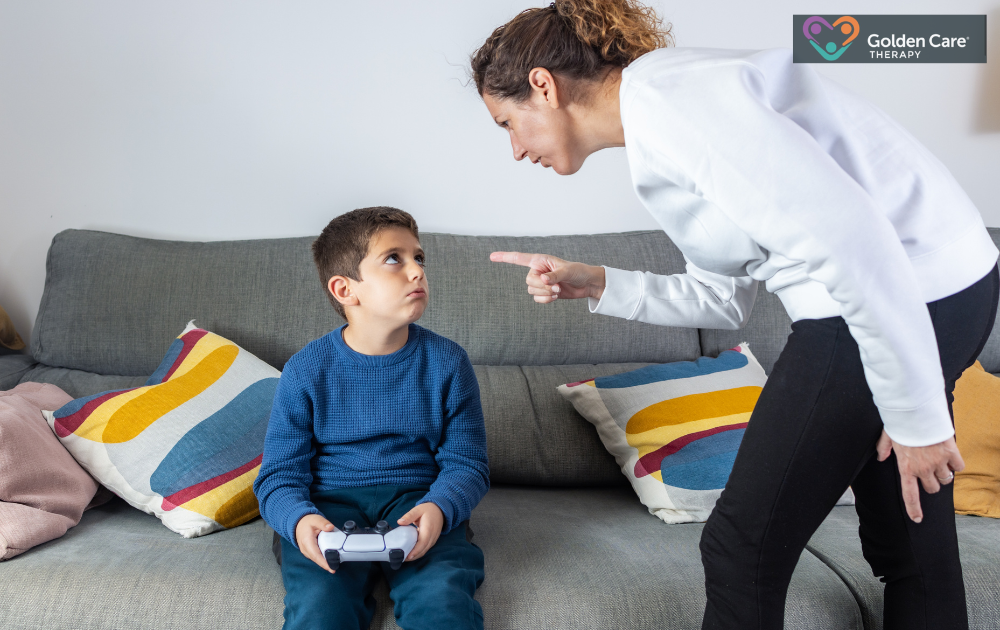Rage attacks can be a challenging aspect for both individuals on the autism spectrum and their caregivers. Due to that, it’s crucial to have a deep understanding of the behaviors and triggers associated with autism rage, as well as the impact it has on individuals and their caregivers.
Autism rage, also known as autistic meltdowns or outbursts, refers to intense episodes of anger, frustration, or aggression displayed by individuals on the autism spectrum. These behaviors can manifest in various ways, including hitting, scratching, biting, or throwing objects.
It is important to note that these behaviors are not purposeful acts of aggression, but rather a result of the individual’s difficulty in expressing their thoughts and feelings verbally.
Triggers for autism rage attacks can vary from person to person. Common triggers may include sensory overload, changes in routine, communication difficulties, or feeling overwhelmed by social situations.
In this article, we’ll have a look at how parents and caregivers can identify these triggers and work toward minimizing their impact on their children.

Impact on Individuals and Caregivers
Autism rage attacks can have a profound impact on both individuals with autism and their caregivers. For individuals on the autism spectrum, these episodes can be distressing and overwhelming. They may feel a loss of control and struggle to understand or communicate their emotions. As a result, they may resort to aggressive behaviors as a way to cope with their frustration or anxiety.
For caregivers, witnessing and managing autism rage attacks can be emotionally and physically draining. It is essential to provide a safe and supportive environment while also taking care of their own well-being.
Understanding the underlying causes of these behaviors and implementing effective strategies is vital in mitigating the impact on both individuals with autism and their caregivers.
Tips for Managing Autism Rage
It’s important for parents and caregivers to have effective strategies in place to ensure the safety and well-being of individuals with autism during rage attacks. To help with that, here are several effective strategies that can help manage autism rage:
Apply the Neutral Redirection Technique
Neutral redirection is an Applied Behavior Analysis (ABA) technique that has proven to be effective in stopping an autistic child from hitting and exhibiting other aggressive behaviors. This technique involves replacing a child’s aggressive and potentially dangerous behaviors with functional and appropriate behaviors.
By identifying the triggers that lead to the outbursts, caregivers can redirect the child’s attention to more positive and acceptable activities.
For example, if a child becomes frustrated during a task, the caregiver can redirect their attention to a preferred activity or provide an alternative way to complete the task.
Neutral redirection can be taught at specialized treatment centers, such as Therapeutic Pathways, and practiced at home with the guidance of professionals. It requires consistency and patience to reinforce the desired behaviors and gradually reduce the occurrence of rage attacks.
Avoid Aggravating Reactions
When an individual with autism displays aggressive behavior, parents and caregivers should remain calm and avoid reacting in a way that could escalate the situation.
Reacting with exaggerated movements, loud voices, changes in facial expression, or any other intense reactions can validate the child’s behavior and reinforce it as an effective way to get what they want.
Instead, caregivers should maintain a calm and composed demeanor by speaking in a clear and even tone. It’s crucial to model appropriate behavior and provide a sense of stability and security for the individual with autism.
By avoiding aggravating reactions, caregivers can minimize the likelihood of further aggression and help the individual learn more appropriate ways to express their needs and emotions.

Teach Sibling Responses
Having a sibling who understands and knows how to respond to their autistic brother or sister’s aggressive behavior can be incredibly helpful in managing the situation and preventing further aggression. Teaching siblings appropriate responses can create a supportive and understanding environment for the entire family.
Siblings can be taught strategies to protect themselves, such as leaving the room immediately when their sibling becomes aggressive. By removing themselves from the situation, they can avoid potential harm while also allowing the individual with autism to calm down. It’s important to emphasize that the sibling’s safety is a priority and that leaving the room is not an act of punishment or rejection.
Furthermore, siblings can be educated about autism and the unique challenges their brother or sister may face. This understanding can foster empathy and patience, helping to reduce tension and conflicts within the family dynamic.
Seek Early Intervention
Seeking early intervention is crucial for individuals with autism as a means of managing autism rage and aggressive behaviors. Addressing these behaviors in a timely manner increases the likelihood of positive outcomes and independence.
Timely treatment is essential for children with autism who exhibit aggressive behaviors. Early intervention provides the opportunity for individuals to develop alongside their peers and acquire important skills for daily life. By addressing these behaviors early on, caregivers can help reduce the impact of autism rage attacks and promote healthier coping strategies.
According to research, early intervention programs for autism can significantly improve an individual’s social skills, communication, and behavior. Seeking treatment options as soon as possible can make a substantial difference in a child’s development and overall quality of life.

Identify the Triggers
Identifying specific triggers that lead to anger for individuals on the autism spectrum is essential. These triggers can vary from person to person and may include environmental factors, disruptions in routines, difficulties in employment and relationships, intolerance of imperfections in others, and the build-up of stress.
To identify triggers, it is helpful to keep an anger management record, such as a diary or chart. This record can track triggers and associated levels of anger, along with the effectiveness of coping strategies used.
By recognizing patterns and common triggers, caregivers and individuals with autism can gain valuable insights into the root causes of anger and develop strategies to address them.
Implement Coping Plans
To manage anger effectively, individuals should develop self-awareness, recognize situations that prompt anger, identify different levels of anger, and implement coping strategies.
One effective technique is the “Stop – Think” approach. This technique involves stopping to think before reacting to a situation, challenging inaccurate or unhelpful thoughts, and creating new, calmer thoughts. Implementing this technique in specific scenarios can help prevent outbursts.
Developing a personal plan for situations that trigger anger is also beneficial. This plan can include specific coping strategies, such as deep breathing exercises, counting to ten, or engaging in a preferred calming activity. By having a predetermined plan, individuals can proactively address their anger and redirect their emotions in a more positive way.
To help with that, here are some strategies that may be helpful:

In some cases, individuals on the autism spectrum may need a personal safety plan for situations where they cannot control their anger. This plan may involve steps such as carrying a distraction item, seeking help from others, leaving the situation, contacting a crisis center, avoiding high-risk situations, making changes to routines, or exploring the potential benefits of medication under the guidance of a healthcare professional.
Employ Effective Communication Strategies
Clear and precise communication is key when interacting with individuals with autism. Using short sentences and simple language can help avoid overwhelming them with excessive information and prevent frustration and anger from escalating. It’s important to be patient and allow them enough time to process and respond.
Visual communication tools can be incredibly helpful in facilitating effective communication. Visual stress scales, Picture Exchange Communication System (PECS), and the use of pictures can aid in expressing wants, needs, and discomfort.
These tools provide a visual representation that can help individuals with autism better understand and communicate their emotions and frustrations.

Use Structured Routines and Visual Tools
Providing structure and routine is essential for individuals with autism. Establishing predictable daily routines can help reduce anxiety and prevent angry reactions. Creating visual schedules or using visual tools, such as visual calendars or timers, can provide a clear visual representation of the daily activities and transitions, aiding in understanding and preparing for upcoming events.
A traffic light system or a scale of 1-5 can be implemented to help individuals with autism recognize and manage their emotions effectively. This approach turns abstract emotions into more concrete concepts, allowing them to identify and communicate their feelings.
For instance, using a traffic light system, green can represent calm, yellow can indicate frustration, and red can signify anger.
Offering a safe space or a designated ‘time out’ area can also be beneficial during moments of distress. This space should be a calming environment where individuals with autism can retreat to when they are feeling overwhelmed or angry. Providing sensory tools or objects, such as stress balls or fidget toys, can help them self-regulate and calm down.

How to Manage Autism Anger in Adults
Understanding and effectively managing autism anger in adults is crucial for both individuals on the autism spectrum and their caregivers. While there is a lack of research specifically focused on autism anger in adults, studies on autism anger in children and young people provide valuable insights.
It’s important to note that manifestations of autism anger in adults can vary, including verbal abuse and physical aggression such as kicking, hitting, slapping, and breaking objects.
Causes and Manifestations
Autism anger in adults can stem from various factors. Difficulties in understanding others or being understood, challenges in processing information quickly, and struggles with recognizing facial expressions and body language can lead to intense frustration and anxiety. These feelings, when left unaddressed, can manifest as anger and aggression.
Adults on the autism spectrum may also struggle with anger due to difficulties in communicating feelings of disturbance, anxiety, or distress. This is particularly true when faced with challenges in areas impacted by autism or Asperger’s syndrome. Sudden outbursts of anger followed by calmness, referred to as meltdowns, can leave those around them stunned and hurt for extended periods.
Creating a supportive and understanding environment is essential for managing autism anger in adults. Clear and calm communication, structured routines, and the use of visual tools can help individuals feel more secure and reduce anxiety.
By implementing these strategies and techniques, it is possible to mitigate anger episodes and promote emotional well-being for adults on the autism spectrum.
Research continues to shed light on the neurological basis of sensory issues in autism, offering hope for more targeted and effective therapies in the future. By recognizing and addressing sensory processing difficulties, we can improve the quality of life for individuals with autism and their families. If you’re seeking specialized ABA therapy in New Jersey, Indiana, Georgia, and New York, Golden Care offers comprehensive services tailored to meet the unique needs of each individual. Contact us to learn more or book a consultation today.
Sources:
https://www.tpathways.org/faqs/what-should-i-do-if-my-child-with-autism-hits-me
https://www.autism.org.uk/advice-and-guidance/topics/behaviour/anger-management/parents
https://www.medicalnewstoday.com/articles/how-to-deal-with-autism-anger-in-adults



